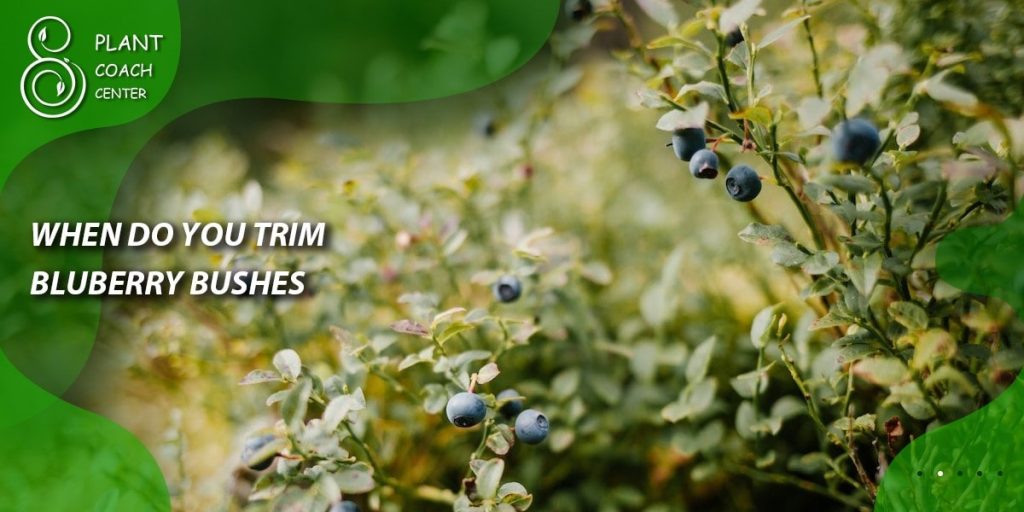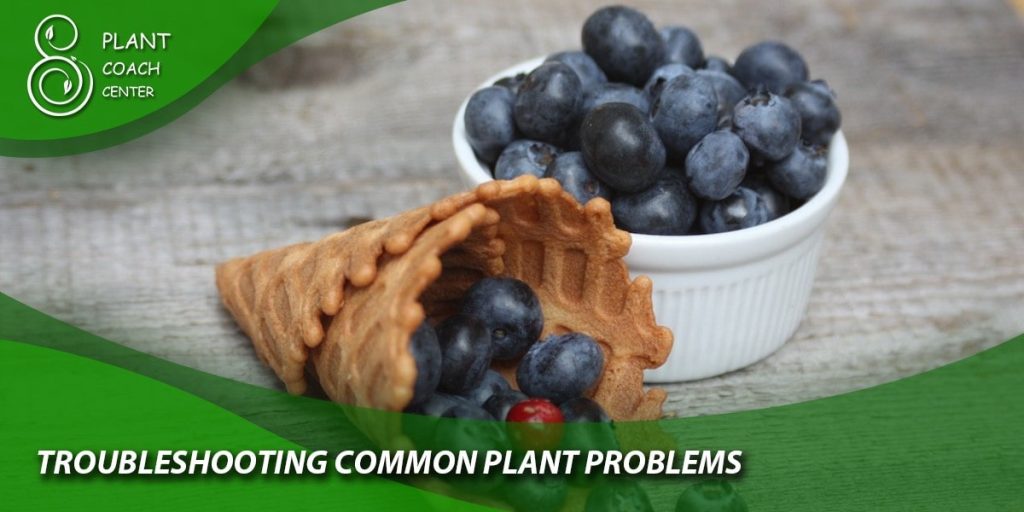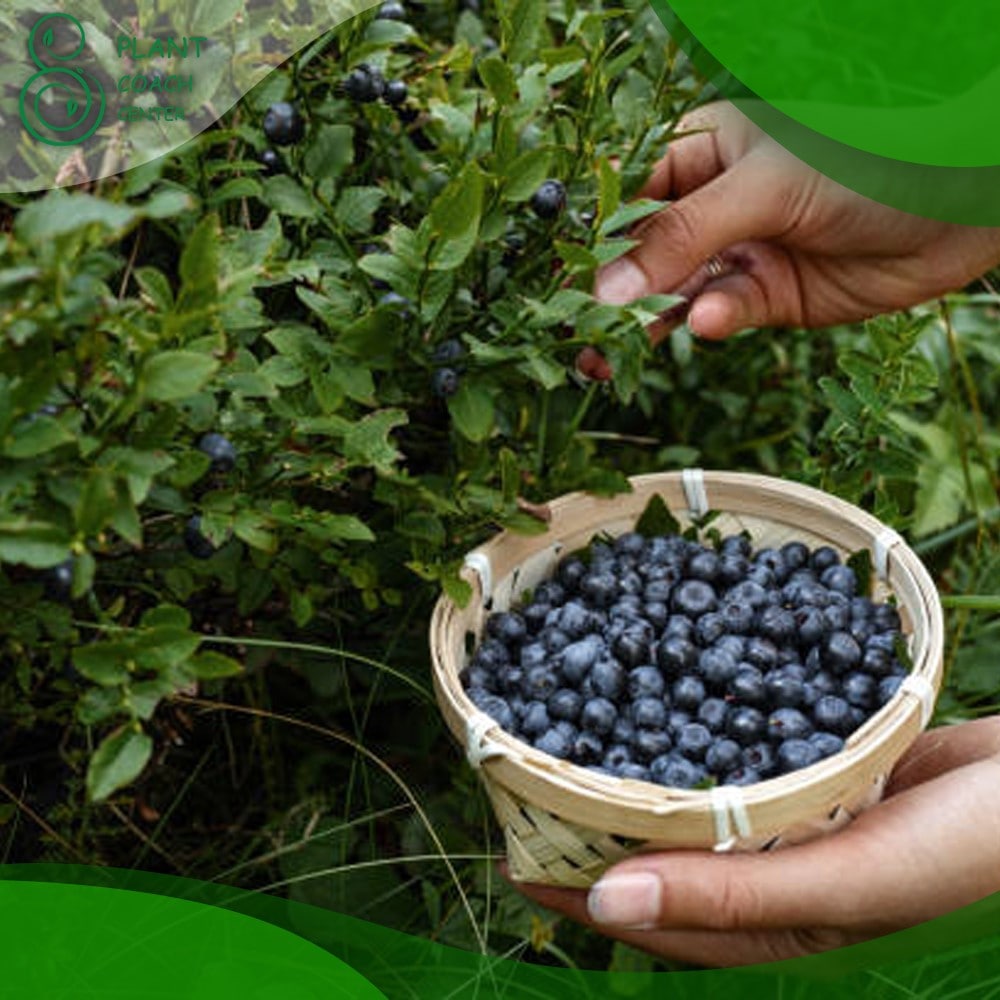When Do You Trim Blueberry Bushes
Blueberry bushes are not only a beautiful addition to any garden but also a source of delicious and nutritious berries. However, to ensure their optimal growth and fruit production, proper pruning is essential.
In this comprehensive guide, we will delve into the art of plant coaching and explore the various plant problems associated with blueberry bushes. By the end of this article, you will have a thorough understanding of when and how to trim your blueberry bushes for maximum health and productivity.
Understanding Blueberry Bushes
Blueberry bushes belong to the genus Vaccinium and are known for their vibrant foliage and sweet berries. Before diving into the intricacies of trimming, let’s familiarize ourselves with the basics of blueberry bushes.

Overview of Blueberry Bushes
Blueberry bushes are deciduous shrubs that typically grow between 4 to 8 feet in height, depending on the variety. They feature elongated leaves and produce clusters of small, bell-shaped flowers that give way to delicious blueberries. Understanding the life cycle and growth habits of blueberry bushes is crucial for effective trimming.
Blueberry Bush Varieties and Their Growth Habits
There are several varieties of blueberry bushes, each with its own growth habits and requirements. The most common types include highbush, lowbush, and rabbiteye blueberries. Highbush blueberries, for instance, are known for their upright growth and are often pruned differently than lowbush or rabbiteye varieties. Familiarizing yourself with the specific characteristics of your blueberry bush variety is essential for successful pruning.
Identifying Healthy Blueberry Bushes
Before engaging in any pruning activities, it’s vital to assess the health of your blueberry bushes. Look for signs of vigor, such as strong stem growth, abundant foliage, and vibrant leaf color. Conversely, be on the lookout for symptoms of diseases, pests, or nutrient deficiencies, which may require additional attention and treatment.
Benefits of Proper Trimming
Trimming blueberry bushes offers numerous benefits, both for the plants themselves and the gardeners who tend to them. Let’s explore some of the advantages associated with proper pruning techniques.
Promoting Growth and Fruit Production
Pruning stimulates new growth by removing old or unproductive branches. This process redirects the plant’s energy towards developing stronger stems and increasing fruit production. By selectively trimming blueberry bushes, you can encourage the growth of new fruitful branches, resulting in a more bountiful harvest.
Enhancing Air Circulation and Sunlight Exposure
Overgrown blueberry bushes can become dense, limiting air circulation and reducing exposure to sunlight. Pruning helps open up the canopy, allowing air to flow freely and sunlight to reach all parts of the plant. Improved air circulation reduces the risk of fungal diseases, while increased sunlight exposure promotes better photosynthesis and fruit ripening.
Managing Plant Size and Shape
Maintaining the ideal size and shape of blueberry bushes is essential for efficient maintenance and harvesting. Regular trimming allows you to control the height and spread of the plants, making them more manageable and aesthetically pleasing. Additionally, well-maintained blueberry bushes are easier to navigate, harvest, and protect against potential plant problems.
In the next section, we will explore the factors that influence the timing of blueberry bush trimming, taking into account growth cycles, climate zones, and soil conditions.
Factors Influencing Trimming Timing
Determining the right time to trim blueberry bushes requires consideration of several factors. By understanding the growth cycles, climate zones, and soil conditions, you can optimize the timing for pruning your blueberry bushes.
Understanding Blueberry Bush Growth Cycles
Blueberry bushes go through various growth stages throughout the year. It is important to align your pruning activities with the specific growth cycle of your blueberry variety. Generally, pruning is best done during the dormant season, typically in late winter or early spring before new growth begins. This allows the plants to recover from pruning stress and promotes vigorous growth in the upcoming season.
Considerations for Different Climate Zones
The timing of blueberry bush trimming may vary depending on the climate zone in which you reside. In colder regions, where winter temperatures drop significantly, it is advisable to prune after the harshest part of winter has passed. This minimizes the risk of cold damage to newly pruned branches. In warmer regions, where frost is less of a concern, pruning can be done earlier in the season.
Impact of Soil Conditions on Trimming Schedule
Soil conditions play a crucial role in the health and growth of blueberry bushes. Certain soil types, such as sandy or well-draining soils, may require more frequent pruning to maintain plant vigor. On the other hand, heavier soils with poor drainage may necessitate less aggressive pruning to avoid overstimulating growth. Assessing your soil conditions and adjusting your pruning schedule accordingly ensures optimal plant health.
Now that we have covered the factors influencing trimming timing, let’s dive into the specific techniques and best practices for pruning blueberry bushes.

Pruning Techniques for Blueberry Bushes
Pruning blueberry bushes requires careful consideration of the tools, techniques, and steps involved. Here, we will outline a step-by-step guide to help you effectively prune your blueberry bushes for optimal growth and fruit production.
Tools and Equipment for Pruning
To ensure a successful pruning session, it is important to have the right tools at hand. Some essential tools for blueberry bush pruning include:
– Pruning shears or secateurs for precise cuts on smaller branches
– Loppers for thicker branches
– Pruning saw for larger branches or older wood
– Sharpening tools to maintain the sharpness of your cutting tools
– Protective gloves and eyewear for safety during pruning activities
Step-by-Step Guide to Pruning Blueberry Bushes
Follow these steps to conduct proper pruning on your blueberry bushes:
- Preparing the Bush for Trimming:
– Inspect the plant for any signs of diseases, pests, or nutrient deficiencies.
– Remove any dead or diseased branches by cutting them back to healthy wood.
– Clear the area around the bush, removing any debris or weeds that may hinder your pruning process.
- Selective Pruning Techniques:
– Identify branches that are crossing or rubbing against each other and remove them.
– Look for weak or spindly branches and cut them back to a healthy bud or side shoot.
– Remove any branches that are growing towards the center of the bush, as they can hinder airflow and sunlight penetration.
- Thinning and Removing Dead or Diseased Wood:
– Thin out the older wood by removing one or two of the oldest branches each year, promoting new growth.
– Cut back dead or diseased wood to healthy tissue, making clean cuts just above a bud or healthy lateral branch.
- Pruning Young vs. Established Blueberry Bushes:
– Young blueberry bushes require lighter pruning to encourage a strong framework of branches.
– Established blueberry bushes can withstand more aggressive pruning to maintain their productivity and shape.
Remember to take breaks during the pruning process and step back regularly to assess the plant’s overall shape and balance.
Pruning Tips and Best Practices
To ensure successful pruning and healthy blueberry bushes, it’s important to keep in mind some essential tips and best practices. Avoiding common mistakes and understanding the timing considerations for different varieties can make a significant difference in the overall health and productivity of your blueberry bushes.

Common Mistakes to Avoid
– Avoid pruning too early in the season, as late frosts can damage newly pruned branches.
– Do not remove more than one-third of the total plant mass during a single pruning session, as it can stress the plant.
– Avoid leaving stubs or jagged cuts, as they can invite diseases and pests.
– Do not overprune, as it can lead to reduced fruit production and weak growth.
Timing Considerations for Different Varieties
Different blueberry bush varieties have varying growth habits and pruning requirements. Consider the following timing considerations:
– Highbush blueberries: Prune during late winter or early spring before new growth emerges.
– Lowbush blueberries: Prune after fruiting in late summer or early fall.
– Rabbiteye blueberries: Prune during late winter or early spring, similar to highbush varieties.
Understanding the Impact of Winter Pruning
Winter pruning can be beneficial for blueberry bushes, particularly in regions with cold winters. It allows you to remove dead or damaged wood and shape the plant before new growth begins in spring. However, be cautious not to prune too late in winter, as it can expose the plant to frost damage.
In the next section, we will address common plant problems associated with blueberry bushes and provide strategies for troubleshooting and managing them effectively.

Troubleshooting Common Plant Problems
Blueberry bushes, like any other plants, can face various challenges that hinder their growth and productivity. By identifying and addressing common plant problems promptly, you can ensure the long-term health of your blueberry bushes. Let’s explore some of the most common issues and their solutions.
Identifying and Addressing Pest Infestations
Pests can cause damage to blueberry bushes, affecting their overall health and fruit production. Common pests include:
– Blueberry Maggot: Monitor for adult flies and use traps or organic insecticides to control their population.
– Aphids: Use natural predators, insecticidal soaps, or neem oil to control aphid populations.
– Spider Mites: Spray the plants with a strong stream of water or use miticides to manage spider mite infestations.
Managing Fungal and Bacterial Diseases
Blueberry bushes are susceptible to various fungal and bacterial diseases. Some common diseases include:
– Powdery Mildew: Apply fungicides or use cultural practices such as proper pruning to improve air circulation.
– Botrytis Fruit Rot: Remove infected fruits and improve air circulation to minimize the spread of the disease.
– Bacterial Leaf Scorch: Prune and destroy infected branches, and avoid overhead irrigation to prevent disease spread.
Nutrient Deficiencies and Soil Imbalances
Nutrient deficiencies can hinder the growth and productivity of blueberry bushes. Some common nutrient deficiencies and their remedies include:
– Iron Deficiency (Chlorosis): Apply iron chelates or foliar sprays containing iron to correct the deficiency.
– pH Imbalance: Adjust the soil pH to the optimal range of 4.5 to 5.5 using sulfur or lime, depending on the soil’s acidity.
By monitoring your blueberry bushes regularly and taking proactive measures to address plant problems, you can maintain healthy and productive plants.
Conclusion
Properly trimming blueberry bushes is an essential aspect of plant coaching, contributing to their overall health, growth, and fruit production. By understanding the growth habits, timing considerations, and best practices for pruning, you can effectively shape and maintain your blueberry bushes.
Remember the key points covered in this comprehensive guide:
– Familiarize yourself with the specific characteristics of your blueberry bush variety.
– Assess the health of your blueberry bushes before initiating any pruning activities.
– Prune during the dormant season, considering the growth cycles, climate zones, and soil conditions.
– Use the right tools and follow a step-by-step pruning guide for optimal results.
– Avoid common mistakes, such as pruning too early, overpruning, or leaving stubs.
– Address common plant problems promptly, including pest infestations, fungal and bacterial diseases, and nutrient deficiencies.
By following these guidelines and paying close attention to your blueberry bushes’ needs, you can enjoy healthy plants and a bountiful harvest of delicious blueberries year after year.
When do you trim blueberry bushes?
Late winter or early spring.
Can blueberry bushes be pruned in summer?
Generally, no.
Is fall a good time to trim blueberry bushes?
It's not recommended.
Should blueberry bushes be pruned in winter?
Winter pruning is preferable.







